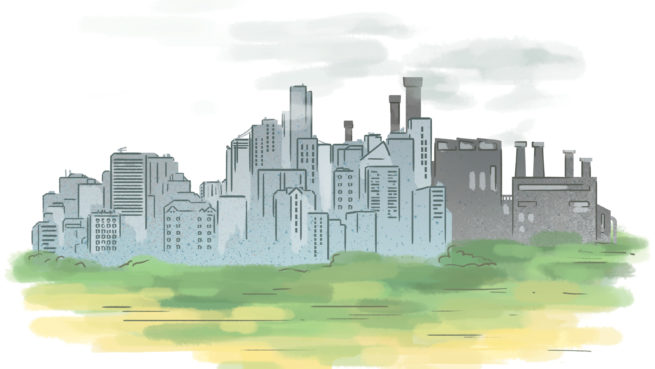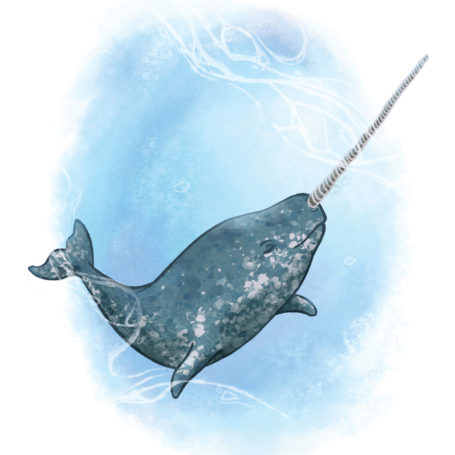July 27, 2022
As the climate crisis accelerates, The Narwhal resurfaces in the prairies
Growing up in northern Alberta, Emma Gilchrist gained a keen appreciation for environmental issues. The province’s economic reliance on the energy industry has long been a topic for media coverage, as have the challenges the industry faces in tackling climate change. Less well-documented, however, was what Gilchrist saw in the individuals and families around her who relied on the energy industry for income, but were sometimes conflicted by its environmental impact.

“For instance, somebody might be working in the natural gas industry on a fracking rig and rely on that for their livelihood, but then also be really concerned about how much water those fracking companies are being allowed to take out of the local rivers,” she says. “The reality is these issues are really complex, and the way that people feel about changes to the natural world is also really complex.”
Though she eventually relocated to the west coast, Gilchrist’s understanding of these complicated and sometimes conflicting narratives remained with her. While working at environmental news website DeSmog Canada, she and Managing Editor Carol Linnitt began to talk about reimagining what journalism could do for climate-focused discussions. In 2018, after nearly five years of working together, the two took the plunge and re-launched as The Narwhal, a non-profit online magazine focused on in-depth and investigative reporting about Canada’s natural world.
“The Narwhal was really born out of that place of wanting to harness the power of journalism to bridge divides and to showcase different perspectives and more complexity on these issues,” says Gilchrist.
At first, Gilchrist and Linnitt were the only staff members. By their fourth anniversary in 2022, their small-but-mighty team had grown to 22, with investigative reporters working across the country. And while The Narwhal got its start on the west coast, the publication’s increasing popularity recently allowed the magazine to expand its operations to include an Ontario bureau, and thanks to the support of Edmonton Community Foundation, a prairies bureau based out of Edmonton. With the new prairies bureau, The Narwhal’s reporters will be well positioned to get to the heart of energy and climate conversations in Canada.
“It’s just so important if we’re gonna grapple with the challenges that we have with climate change and threats to the natural world, we have to grapple with them where those conversations are the hardest and the most complicated. And I think that a lot of those hard conversations are happening on the prairies,” says Gilchrist. “Getting reporters out on the ground there, talking to the people who are living there about really key stories, and getting connected to the communities on the prairies is really exciting, and really important.”
As a non-profit publication, The Narwhal depends on its membership base, which has grown to nearly 5,000 members over the past four years. In a time when many legacy media outlets and print publications have been threatened by loss of advertising revenue, The Narwhal’s model seems to have something right.
“Our people voluntarily pay what they can afford basically to help support our work,” Gilchrist says. “The growth has just been really heartening in a time when we hear a lot about the things that are going wrong in the journalism industry and The Narwhal has gotten to be this example of something that is heading in the other direction.”

Much like its nautical namesake, The Narwhal is unique in many ways. Its non-profit funding model, while relatively uncommon in Canada, is modelled after similar publications in the United States, where a non-profit news sector operates more than 350 newsrooms across the country. It’s a model, Gilchrist notes, that offers a hopeful alternative to the narrative of dying news.
“For me personally, one of the most rewarding things is creating a new model for journalism that others can replicate,” she says. “And part of what we are doing at The Narwhal is being really thoughtful and intentional about the way that we cover environmental issues. The Narwhal was really born out of a lot of frustration with the way that environmental issues were being covered in Canada. They’re really polarizing.”
Sharon J. Riley, The Narwhal’s Edmonton-based bureau chief at its Edmonton office, has been a part of the organization since its early days. As the lone staff member in Alberta for the first few years, she worked to change the perceptions of environmental journalism in the province. Now, as The Narwhal’s prairie team grows to three staff members spread across Alberta to Manitoba, she hopes they can continue to move past divisive narratives to encourage productive and meaningful conversations about environmental issues.
“You automatically become less polarized when you get deeper into these stories and see how complex they are,” she says. “We sometimes like to say we’re focused on telling ugly stories beautifully. For instance, stories of mining or oil wells on someone’s property, those can be ugly stories to hear about. But we’re trying to illuminate new perspectives and new voices, and share people’s real, lived experiences.”
This story comes from the Summer 2022 edition of Legacy in Action. Read the full magazine.